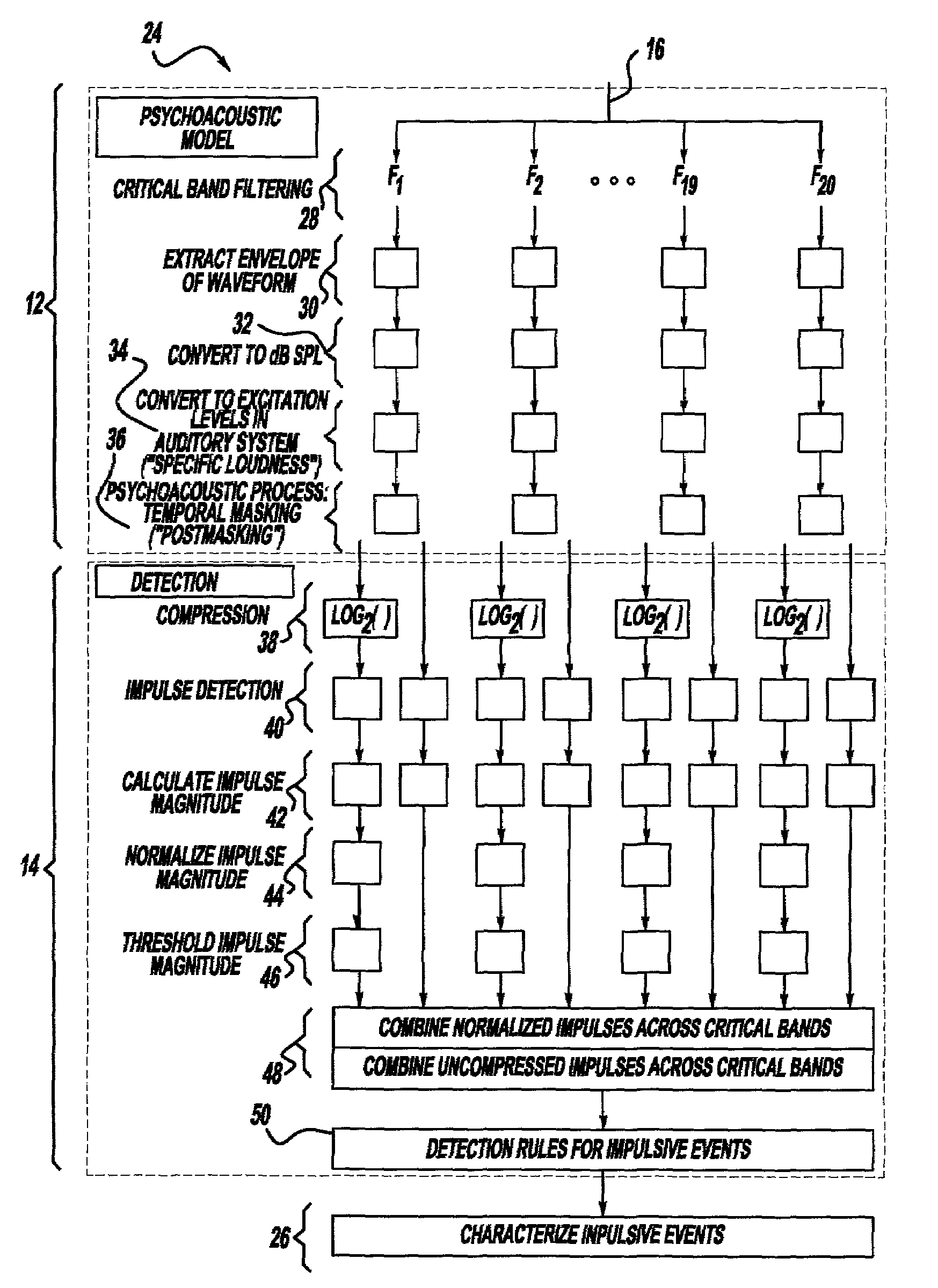Method and implementation for detecting and characterizing audible transients in noise
- Summary
- Abstract
- Description
- Claims
- Application Information
AI Technical Summary
Benefits of technology
Problems solved by technology
Method used
Image
Examples
Embodiment Construction
[0012]Referring to FIG. 1, a flow diagram 10 showing the processing and detecting of impulsive sounds of the present invention is shown. Flow diagram 10 includes two stages: an auditory model processing stage 12, and a detection and classification processing stage 14.
[0013]Initially, auditory model processing stage 12 receives a microphone signal 16 that is processed using a model of the human auditory system. Stage 12 then outputs twenty channels of data 18, where each channel represents frequency-dependent activity in the auditory system as a function of time. This output data 18 is processed to detect and characterize impulsive sounds. Examples of data from three channels 20 are shown, where traces have been offset vertically for viewing purposes.
[0014]Detection and classification processing stage 14 receives the data 18 from the auditory model processing stage 12. If an impulsive sound is detected, it is characterized by its time-of-occurrence and intensity. An example of detect...
PUM
 Login to View More
Login to View More Abstract
Description
Claims
Application Information
 Login to View More
Login to View More - R&D
- Intellectual Property
- Life Sciences
- Materials
- Tech Scout
- Unparalleled Data Quality
- Higher Quality Content
- 60% Fewer Hallucinations
Browse by: Latest US Patents, China's latest patents, Technical Efficacy Thesaurus, Application Domain, Technology Topic, Popular Technical Reports.
© 2025 PatSnap. All rights reserved.Legal|Privacy policy|Modern Slavery Act Transparency Statement|Sitemap|About US| Contact US: help@patsnap.com



